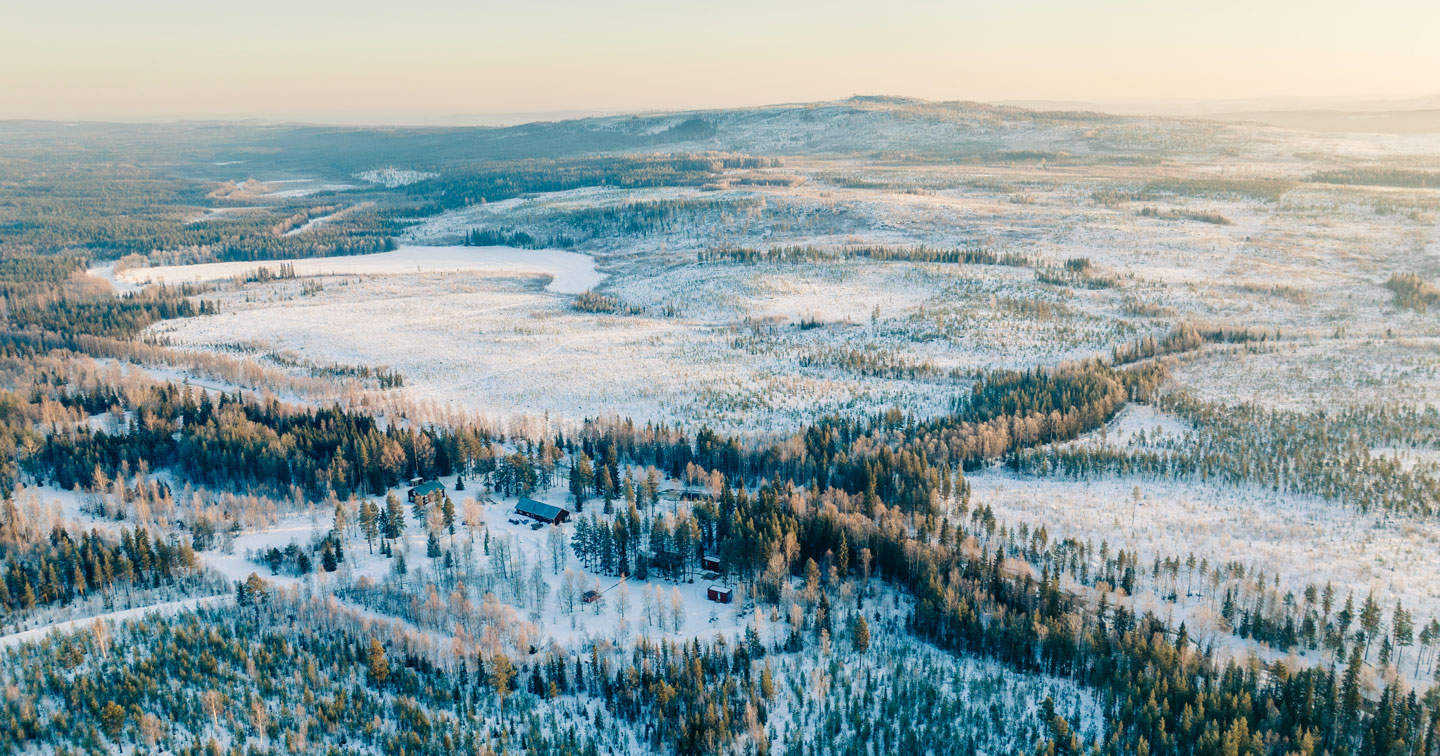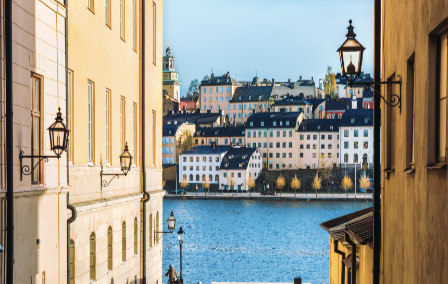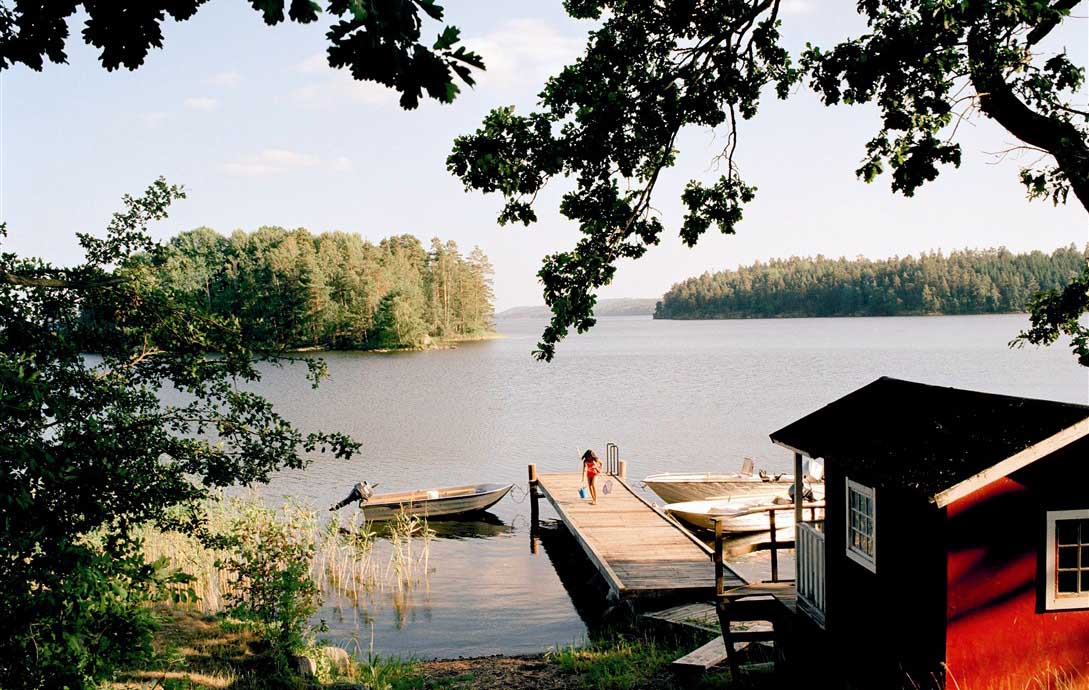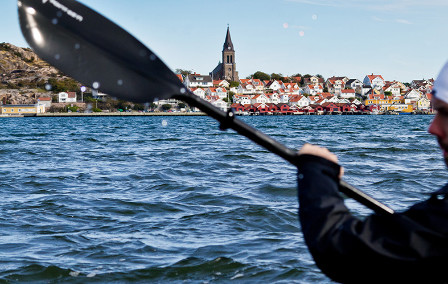Published 29th Apr. 2023
Reading time
‘Fancy a coffee?’ It’s an invitation posed countless times a day all over the world, and the catalyst for some of life’s biggest – and smallest – moments, from the start of a life-long relationship to a new career opportunity. But nowhere is the coffee break more meaningful than in Sweden, where it even has a special name – 'fika'. This cosy custom is shared by young and old, rich and poor, by people born in Sweden and those who have settled here. It’s also extremely easy to participate in if you are visiting – a simple way to experience a significant yet sweet slice of Swedish culture. So what is 'fika' in Sweden? Read on for a crash course.
Pronounced ‘fee-kuh’, the word loosely translates as ‘coffee break’. However, it’s so much more than grabbing your favourite shot of caffeine on the go. Used as both a verb and a noun, fika is chance to slow down, to take a break, and to socialise. It typically involves enjoying a cup of coffee and a bite to eat in good company, and the mental benefits are just as important, if not more so, than the physical reward, however sweet that may be.
Fika can be taken at home, but more commonly it’s shared in a favourite coffee shop, and even at work. Indeed, most Swedish companies schedule fika into the working day – and it’s a trend that has recently gone global. These days the aspirational, affluent Londoner, New Yorker or Sydney-sider doesn’t just pop out of the office for a quick coffee — they might take 30 minutes to press pause and go for fika with a friend or colleague.
While coffee mornings are the done thing elsewhere, in Sweden, any time is fika time. It can be enjoyed in the early morning, before the working day begins, over lunch, or late into the evening (decaf anyone?). And crucially, it’s not restricted to once a day. You can enjoy fika as many times as you wish. For Swedes, weekends are typically taken up with multiple fika moments, and everyone has their favourite time and way to do it.
For purists, fika in Sweden starts with strong, black coffee (although substitutions like flat white, tea or any other drink are perfectly fine too). Most Swedes combine their drink with a sweet treat, known as ‘fikabrod’. Cinnamon buns are the most popular, alongside chokladbollar (chocolate balls), cakes and biscuits. But again, anything goes, so choose your favourite beverage and side, then sit down and savour the moment.
Fika can be traced back to the 19th century and is derived from ‘kaffi’ – the Swedish word for coffee. Coffee has been banned in Sweden several times over the centuries, and people meeting during prohibition needed to create a secret new word for ‘kaffi’, or so the story goes. True or false, the fifth, and final, coffee ban ended in Sweden in 1822. None of the bans succeeded and Swedes were already well on their way to becoming the coffee loving citizens they are today.
Again, there are no rules. Fika in Sweden can last 15 minutes or five hours, but like all good things in life, it’s best when savoured. Slow down, take your time and enjoy the moment.
Fika isn’t seasonal, it’s a ritual that Swedes enjoy year-round. In autumn and winter, visitors can join the locals in cosy, candlelit cafes – the perfect places to warm up after a busy morning or afternoon of sightseeing. Come spring and summer, Swedes love to fika al fresco and you’ll often spot locals gathering under blankets on crisp, cool days. Grab a seat street-side and enjoy a spot of people watching as the squares fill up.
Fortuitously, Sweden is blessed with a bounty of cosy and comfortable bakeries and coffee shops that provide the perfect setting for fantastic fika-ing. In Stockholm you can admire the colourful, medieval buildings of Gamla Stan while enjoying your break, while the Haga district of Gothenburg is famous for its oversized cinnamon buns. The little town of Alingsås, 28 miles north-east of Gothenburg, is known as the ‘Capital of Fika’. It’s a picturesque town, with the most cafés per capita in the country, and its flourishing fika culture dates as far back as the 1700s. Wherever you go in Sweden, you’ll be spoilt for choice when it comes to coffee and bakes. And while you’ll find a few smaller chains, most Swedish coffee shops are independent outfits that are full of character. Sounds like the perfect blend for a pleasure-filled break.
Fancy a fika?

Enthusiasm is contagious, and there’s no better way to get excited about a Swedish getaway than by talking to our travel consultants. Tap into the Swedish wilderness in a specially selected cabin (we’re constantly on the hunt for the best), or fika ‘til you drop in our favourite Stockholm cafes (which we’ve done the tough job of testing out for you). Along with our hands-on Concierge team, we can help you do as the locals do and organise the best activities for your trip, from overnight dog sledging to outdoor cooking.
ENQUIRE NOWPractical advice and inspiration for your next trip

Stockholm or Gothenburg, Gothenburg or Stockholm... As Sweden’s stylish capital (and, more importantly, the birthplace of ABBA), the answer to this question appears to be a no-brainer. What could be more iconic than the hometown of the Swedish supergroup? Yet, as trendy and charming as Stockholm is, Gothenburg also has a lot going for it. Built along Dutch-style canals and blessed with leafy boulevards, Sweden’s ‘second city’ has everything you could want from a lively metropolis – without the crowds.
5th April 2025 - Sweden Culture

From its fairy-tale-like landscapes to its vibrant cities and otherworldly Northern Lights displays, Sweden is an easy country to fall in love with. Beauty abounds in this Nordic nation, and you’ll find plenty to point your camera at, whether it’s the colourful buildings and cobblestone streets of Stockholm, the frozen lakes and sugar-dusted mountains of Swedish Lapland or sweeping wildernesses and sandy beaches of Gotland.
1st February 2025 - Sweden Travel Inspiration

The Swedes know how to embrace the great outdoors, and our Europe specialist, Valeria, discovered what the hype’s all about during her recent research trip. She learnt about lobster fishing, relaxed in a lakeside sauna, slurped fish soup, hopped between islands on ferries and appreciated the country’s eco way of life...Valeria’s trip was nothing short of authentically Swedish. Interested in learning all about it?
20th November 2024 - Sweden Travel Tips

Our team of destination experts will get to know you and your unique requirements for your holiday

We work with you to build an ultra-personalised holiday itinerary with your choice of accommodation, experiences and activities

All of our holidays include little extras designed to make a big difference to your trip, from fast-tracking you through airport check-in and security to our network of local Concierges